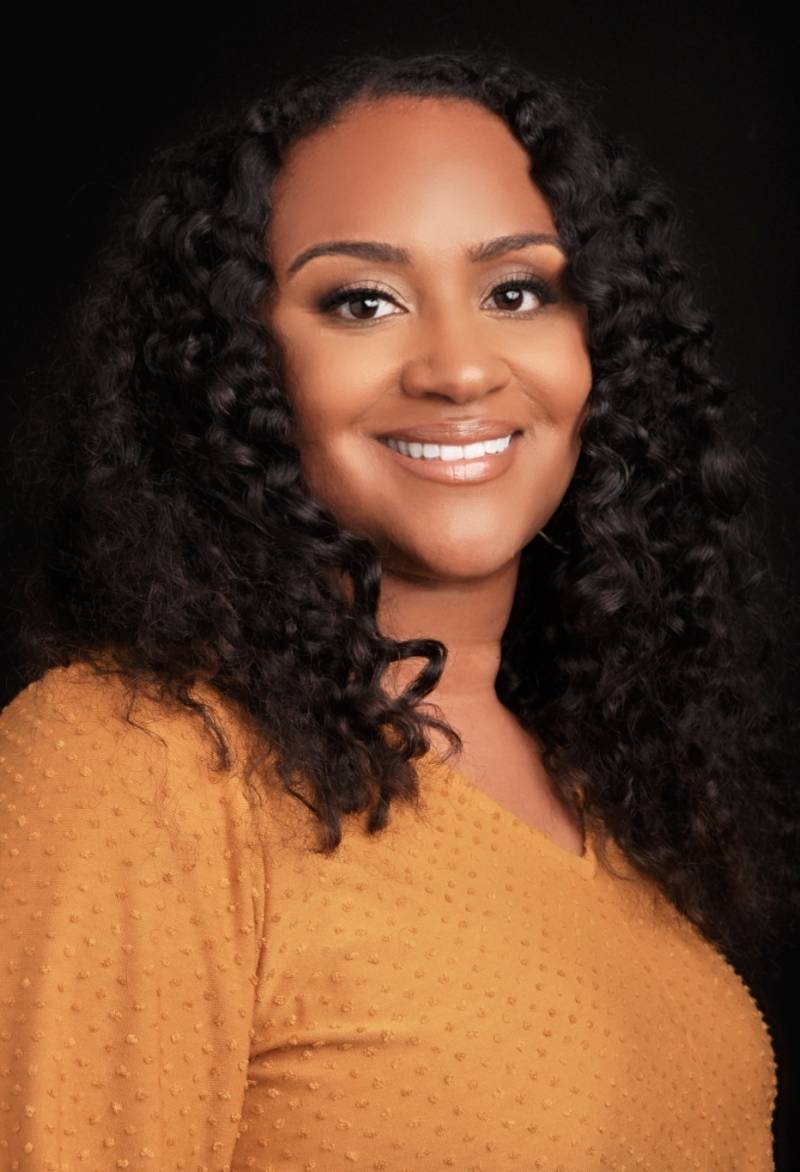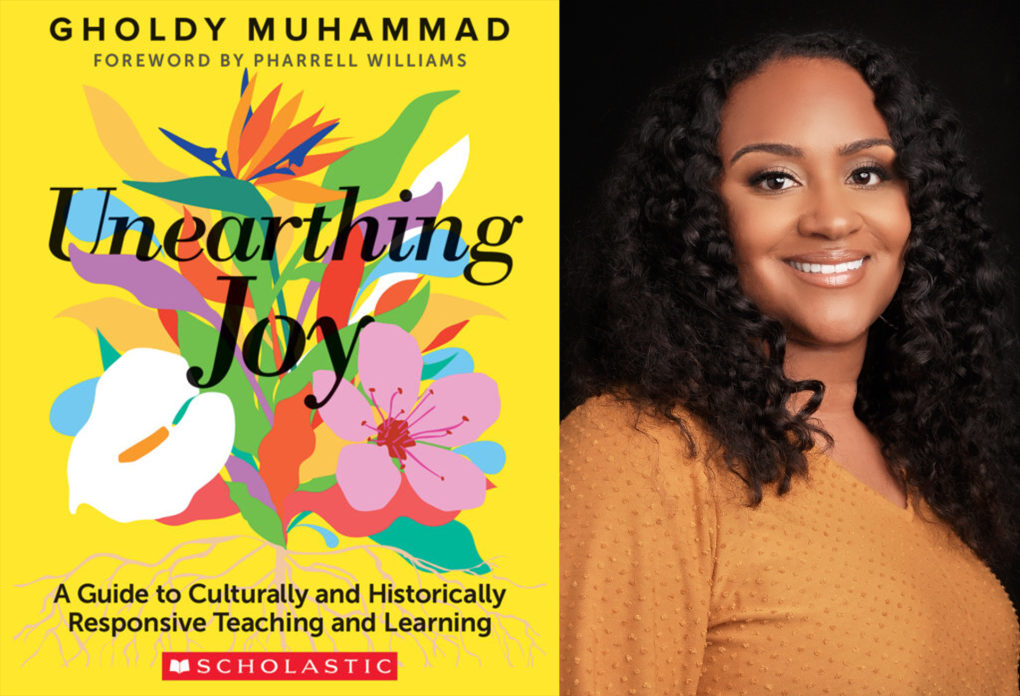TM ® & © Scholastic Inc. All rights reserved. Unearthing Joy © 2023 by Gholdy Muhammad. Published by Scholastic Inc.
Defining the world as curriculum means we must move about and navigate the world, and see it as full of opportunities for teaching and learning. Often, I ask teachers to take a walk across any landscape and describe what they see. How can the people, places, lands, objects, animals, and things around them become ideas for teaching and learning? For example, if you were to see a beautiful historic tree with striking buttress roots pushing up from the ground and interweaving with the soil and the trunk, what ideas for teaching and learning might come to mind?
I ask teachers and other developers of curriculum:
- What music and other sounds, paintings, and other visuals, digital creations, and so on do you see and feel? (Art)
- What language, writing, and metaphors do you see and feel? (English Language Arts)
- What examples of fitness and wellness do you see and feel? (Health and Physical Education)
- What representations of numbers, quantities, and space do you see and feel? (Mathematics)
- What branches of knowledge and discovery do you see and feel? (Science)
- What histories and contemporary realities do you see and feel? (Social Studies)
Their responses become ideas to bring into the classroom. My goal is to cultivate curriculum fluency among teachers, meaning the ability to look at anything around them quickly and develop curriculum from it. Just as I want children to develop reading fluency, I want teachers to develop curriculum fluency to come up with ideas expeditiously and with excellence.
Curriculum as Stories and Storytelling
Curriculum defined as stories and storytelling relates to the worthwhile narratives of humanity. Reading, telling, and listening to diverse stories are key to learning in school. We must ask whose stories have been told and taught (and from whose perspectives) and whose stories have not. Stories have a special quality of helping children to (re)member. They can be both real and imagined, and joy is connected to both types. As a reading specialist, I often give diagnostic assessments and find that students typically score higher on comprehension measures when they read narrative passages or texts, compared to informational passages or texts. That may be partly due to the power of stories to linger in our short-term and long-term memories. Stories provide a context for and connection to human lives.
I define curriculum as stories and storytelling because of their richness. I am not just referring to traditional literary themes and elements, such as characterization and plot, but the nuances, reflections, meanings, life lessons, and life connections to stories. Curriculum as stories and storytelling helps us to apply skills and standards to daily life. Importantly, artists across time have been creating and teaching through stories. For example, in Stevie Wonder’s 1976 album, Songs in the Key of Life, each track tells a story. When I listen to it, I wonder, What would curriculum in the key of life look and feel like for a child and teacher?
The reason educational leaders police curriculum and create policies around anti-Blackness and anti-critical race theory is because they seek to control stories in the hearts and minds of children. Consequently, as they grow older, those children are likely to teach the same false, incomplete, or harmful narratives to their children. In this way, curriculum is generational. I wonder how those leaders must feel about themselves restraining complete, justice-centered stories in schools. I ask teachers and curriculum developers, Which stories do schools consider worthwhile? What criteria were used to select those stories? How do the stories we teach elevate students’ HILL (histories, identities, literacies, and liberation)?
Curriculum as Legacy and Legacy Building
Curriculum defined as legacy and legacy building means that what we teach and how we teach it must leave an imprint on the lives of our students. It should feel special and enduring. Such curriculum should encourage and enable students to feel, and act toward improving the self and the world. What is being taught and learned should be significant, meaningful, and unique to our communities. Curriculum as legacy and legacy building should leave a stamp on our culture—and lead to a record of our times. Every time I develop a lesson, unit plan, or learning experience, I try to build in the legacies of the ancestors—this is what the five pursuits enable. I ask teachers and curriculum developers: What legacies do you wish to create? What do you want to be known for? What imprints and trajectories do you want to make?
These ways of (re)defining and (re)conceptualizing curriculum are dynamic and push boundaries of imaginings of who our students can become. Curriculum must not only connect to the world, but must also disrupt hurt, harm, and pain in the world. So, it’s important to ask yourself, does my current curriculum:
- implicitly or explicitly contribute to others’ hurt, harm, or pain?
- silence others’ hurt, harm, or pain?
- actively disrupt others’ hurt, harm, or pain, and bring joy?
We must question curriculum and the great impact it can have. Of course, curriculum should always connect to justice, equity, anti-racism, and other anti-oppressions, and the ultimate goal of curriculum should be joy.
 Dr. Gholdy Muhammad
is an Associate Professor of Literacy, Language & Culture at the
University of Illinois at Chicago. Her scholarship has appeared in
leading educational journals and books. Dr. Muhammad was named among the
top 2022 education scholars of public influence in Education Week's "Rick Hess Straight Up" blog rankings. She is the author of the best-selling book, Cultivating Genius: An Equity Framework for Culturally and Historically Responsive Literacy (Scholastic).
Dr. Gholdy Muhammad
is an Associate Professor of Literacy, Language & Culture at the
University of Illinois at Chicago. Her scholarship has appeared in
leading educational journals and books. Dr. Muhammad was named among the
top 2022 education scholars of public influence in Education Week's "Rick Hess Straight Up" blog rankings. She is the author of the best-selling book, Cultivating Genius: An Equity Framework for Culturally and Historically Responsive Literacy (Scholastic).




